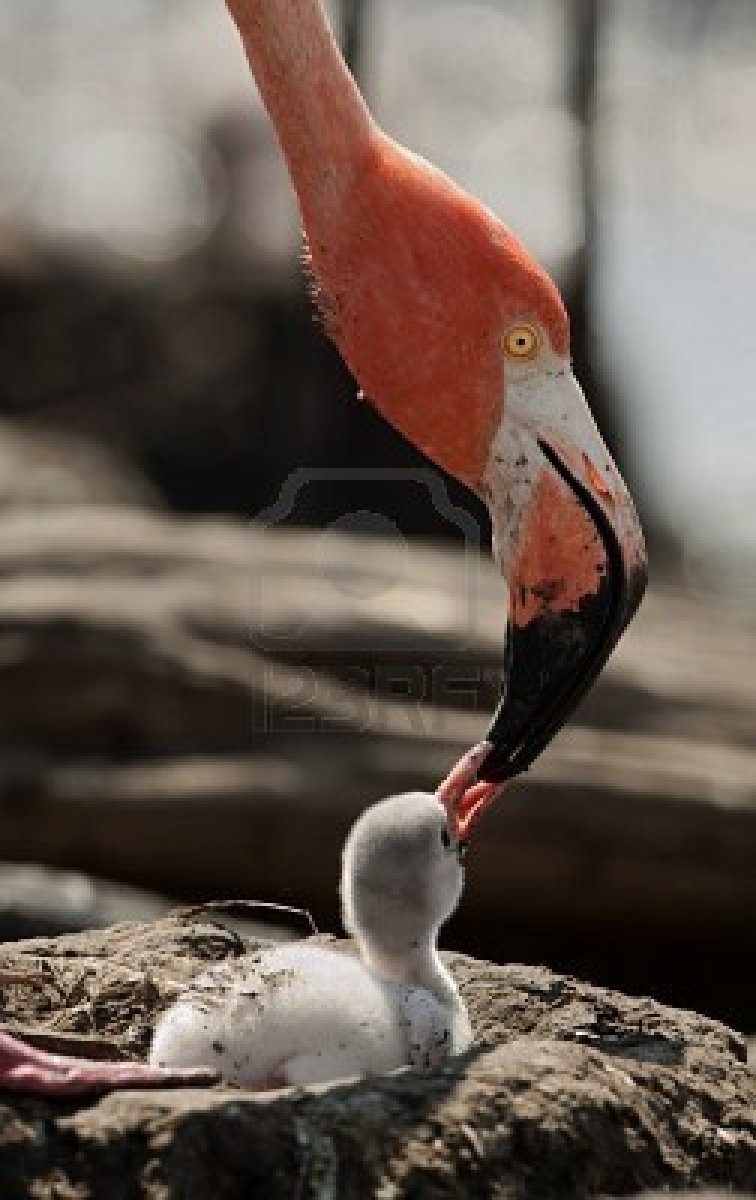

Flamingo
THERE are several species of the curious bird known as the flamingo, and some of them are to be found in all the warmer countries of the globe.
They are wading birds, and always make their home near the water, by the sea, or in some marshy place. Their food consists of clams, oysters, marine insects, small fish, etc.
These birds always keep in companies, whether in the air or on the land; and while they are feeding or resting, one of them acts as sentinel, and on the approach of danger gives the alarm by making a trumpet-like noise, and starts off, leading all the rest of the flock. They can both fly and run swiftly, but though web-footed, they cannot swim. Their web feet, however, assist them in wading, by keeping them from sinking in the soft, muddy bottom. When flying over the land, they keep high up in the air, but fly very low over water. They never alight on land, but keep sailing round and round over a shallow place until they finally alight in the water, and then wade to shore. The small head, huge crooked bill, long and slender neck, stilt like legs, and comparatively small body give the flamingo the most peculiar form among birds.
They fly with head and legs extended, and in this position often measure five feet from bill to end of claws, and the same distance from the tip of one wing to the tip of the other.
The nest of the flamingo is a curious affair. It is built on the ground, near the edge of the water, and is made of mud. These nests are about twenty inches high, and of a very queer shape, as we see by our picture. The hillock is solid, but in the top is a basin, or hollow, in which the eggs are laid on the bare earth. The eggs are pure white, and usually three in number, being about the size of a goose egg. In order to hatch the eggs by the warmth of her body, the bird gets astride the nest, with one leg on each side of it.
The flamingo is very shy, and is seldom hunted except for its beautiful feathers. The male, when in full plumage, is of a rose-red color, with deep purple wings. The female is of a less brilliant color. The young are at first nearly white, and do not appear in their full red plumage until the second year. The European flamingo is usually known as the Red Flamingo; those found along both the east and west coasts of America are more of an orange hue.

